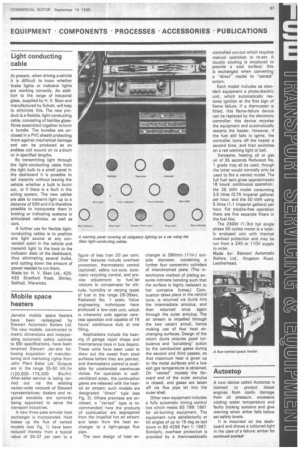Light conducting cable
Page 93

If you've noticed an error in this article please click here to report it so we can fix it.
At present. when driving a vehicle it is difficult to know whether brake lights or indicator lights are working correctly. An addition to the range of industrial glass, supplied by H. V. Skan and manufactured by Schott, will help to eliminate this. The new product is a flexible, light-conducting cable, consisting of hairlike glassfibres assembled together toform a bundle. The bundles are enclosed in a PVC sheath protecting them against mechanical damage and can be produced as an endless coil wound on to a drum or in specified lengths.
By transmitting light through the light-conducting cable from the light bulb to a small panel in the dashboard it is possible to tell instantly without leaving the vehicle whether a bulb is burnt out, or if there is a fault in the wiring system. The new cables are able to transmit light up to a distance of 55ft and it is therefore possible to incorporate them in braking or indicating systems in articulated vehicles, as well as cars.
A further use for flexible lightconducting cables is to position one light source at any convenient point in the vehicle and transmit light to the back to the indicator dials of the dashboard, thus eliminating several bulbs, and cutting down the amount of power needed to run them.
Made by: H. V. Skan Ltd., 425433 Stratford Road, Shirley, Solihull, Warwicks.












































































































































